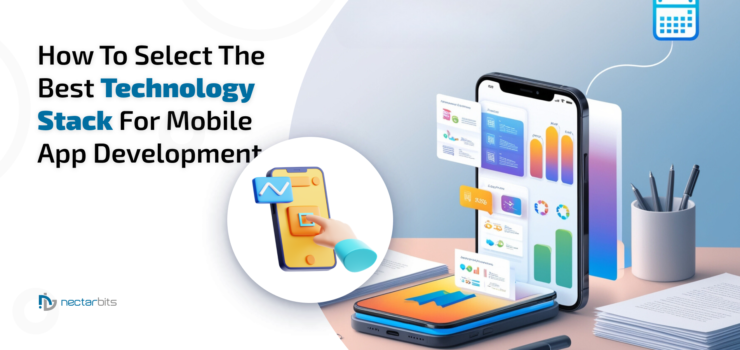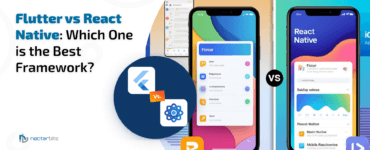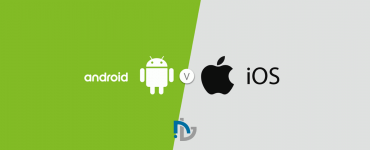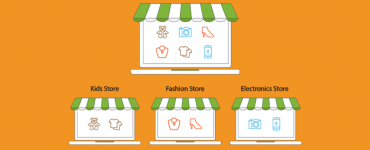Technology is like a fish, which if longer stays on the shelf, it becomes less desirable. What’s the take? It’s continuously updating- that’s good. Get in the game- technology is continuously inventing the business future.
When you embark on the mobile app development journey, it will never succeed unless the right mix of technologies and tools is leveraged. For instance, you manage to get build an app but if it fails to scale or perform flawlessly on various operating system versions or upcoming versions, then everything goes in vain. You need to choose technologies that ensure the best performance currently and positive future growth as well.
Now, the equation of mobile app development is clear.
Mobile App Success = Right Technology Stack Selection
The most difficult question is- Which technology is promising for your business project- mobile app development? It’s not a low-hanging fruit in the garden. At the same time, you can’t shoot in the dark. Confused- what to do?
Understanding the need, here we have unpacked the technology stack that’s a perfect fit for the next mobile app development project.
Before We Arrange and Play With It, Let’s First Understand Technology Stack In A Nutshell:
Technology stack is a combination of programming languages, tools, frameworks, APIs, databases, and other software that forms the foundation of the final app development. 4 components of mobile app development together make one technology stack.
Front-end development
It’s an interface with which users interact and navigate through the app. The performance, accessibility, and scalability make the app stand out in the crowd and help in catching maximum eyeballs. The interface must be developed and designed in a way that it works well everywhere, irrespective of various platforms, device screen sizes, and resolutions.
Back-end development
It’s the backbone of the app on which the app’s functionality, performance, and security rely on. The back-end is the ugly part that users cannot see, and where data is stored, and business logic works. For the backend development, the web servers, database, programming languages, frameworks, microservices, and other things are involved.
Mobile App Development Platform (MADP)
MADPs enable app development, testing, and deployment in the least possible time and effort for the range of devices. The companies can build MADPs, but mostly prefer to use third-party MADPs that include- mBaaS, front-end development tools, and APIs for management. MADPs come in various forms that provide web, native, hybrid, cross-platform development capabilities, in addition to choices for on-premise and cloud-based services.
Additional requirements
In addition to front-end development, back-end development, and MADPs, there are a ton of tech elements that developers need from the arsenal box. It signals the developers have additional tools and technology requirements that need to be fulfilled.
Exploring the Different Types of Technology Stacks for Building Powerful Applications
Top Technology Stacks for Developing High-Performance Native Apps
When it comes to building quality apps where performance and robustness matter a ton, native app development is the first choice of developers and businesses. The native development excels in allowing the apps to leverage the device-specific functionalities without requiring any third-party integration.
Mostly, two platforms- Android and iOS are considered when it comes to native development. However, both platforms have different capabilities, where different programming languages, SDKs, development environments, and toolkits are leveraged. Let’s understand the technology stacks in brief:

Top Technology Stacks for Building Cutting-Edge Android Apps
For Android app development, when it comes to programming language selection, the two languages- Java and Kotlin that are majorly used worldwide. Java is an old-kid on the technology block with a slew of open-source tools and libraries, is highly embraced by Android app development companies.
Kotlin has also emerged as a runner-up language which has started getting popularity with gradual upgrades. It’s considered as lightweight, clean, less verbose, and stable than Java. Initially, Kotlin was built to resolve API design deficiencies associated with some of Java’s existing models. The recent update has enabled to use of both languages with seamless transition.
Android studio provides full Android mobile-specific coding support with code editing, debugging, build system, performance tooling, and deploy the system. Android developer tools supercharge the developers with all the tools like- graphical UI builder, on-device debugging tool, emulators, and test automation.
Not to forget, the Android SDK allows developers to include the latest feature in the app. Android SDK is easily downloadable on the respective device and the case is no different with installing the latest updates of SDK.
Top iOS Technology Stacks for Building High-Performance Apps
Objective C and Swift are the two popular programming languages in the iOS development landscape and are highly preferred by iOS development companies. Objective C is the superset of the C programming language, which is packed with the dynamic runtime environment and object-oriented capabilities. Swift has taken the center stage because it’s less error-prone, highly functional, and dynamic libraries. Watermark library is the latest addition to Swift that allows developers to put watermarks on images and videos.
Toolkit- Apple Xcode is the complete package that enables native iOS app development for mobile and desktop. Xcode provides support for the graphical editor, Git repositories, documentation, and debugging tools, and instrumentation. IntelliJ AppCode and Apple Xcode are commonly used for iPhone and iPad app development.
iOS SDK contains an API (Include programming libraries and other tools) that links the application and the platform they run on. The iPhone SDK contains tools for touchscreen interface and respective OSs that help in running Apple’s devices like- iPhone, iPad, and other devices.
Leading Technology Stacks for Developing High-Quality Hybrid Apps
The business wants to market the app in the least time and is low on budget, they prefer a hybrid app development option. The standard technologies and tools are used for app development and later, the shared code is wrapped in a native container to ship the app to respective app stores. mostly, three frameworks- PhoneGap, Sencha Touch 2, and Ionic used by hybrid app development companies.
PhoneGap is also termed Apache Cordova that runs HTML-based applications in a native container. The apps can access native device-specific functionalities when they run on a particular platform. The framework supports many libraries that zero down the developer’s reliance on HTML and CSS technologies to build UI.
Ionic, being an Angular framework helps Ionic to cherish all the angular advantages and community support. The DOM elements reusability and other features give hybrid apps a native look and feel but fail when it comes to performance.

Top Technology Stacks for Building Powerful Cross-Platform Apps
The app developed once can run on all platforms because a single codebase is shared with different platforms that allow developers to run smoothly on every platform and most of the devices. There are different frameworks’ combinations that enable cross-platform development.
React native and JavaScript is the popular combo that enables building native-like app development. Instagram and Skype are the popular instances of the same. When both frameworks are used in conjunction- react native uses basic building blocks and JavaScript puts them together. With react native, the application logic is written and the user interface is crafted, and the app runs in JavaScript.
Some of the developers replace JavaScript with TypeScript in react native and JavaScript combo to build the cross-platform application. TypeScript features generic components that create a net of safety when developers write code, detect and fix the errors quickly, and make the feedback loop strong.
Xamarin and C# is also a famous combo in the development space that enables developers to share 90% of the code across platforms. Slack and Pinterest are developed using this rare combo. C#’s tooling and IDE support allow cross-platform development where device-specific APIs and functionality are leveraged from C# code and cross-compiled to native platforms.
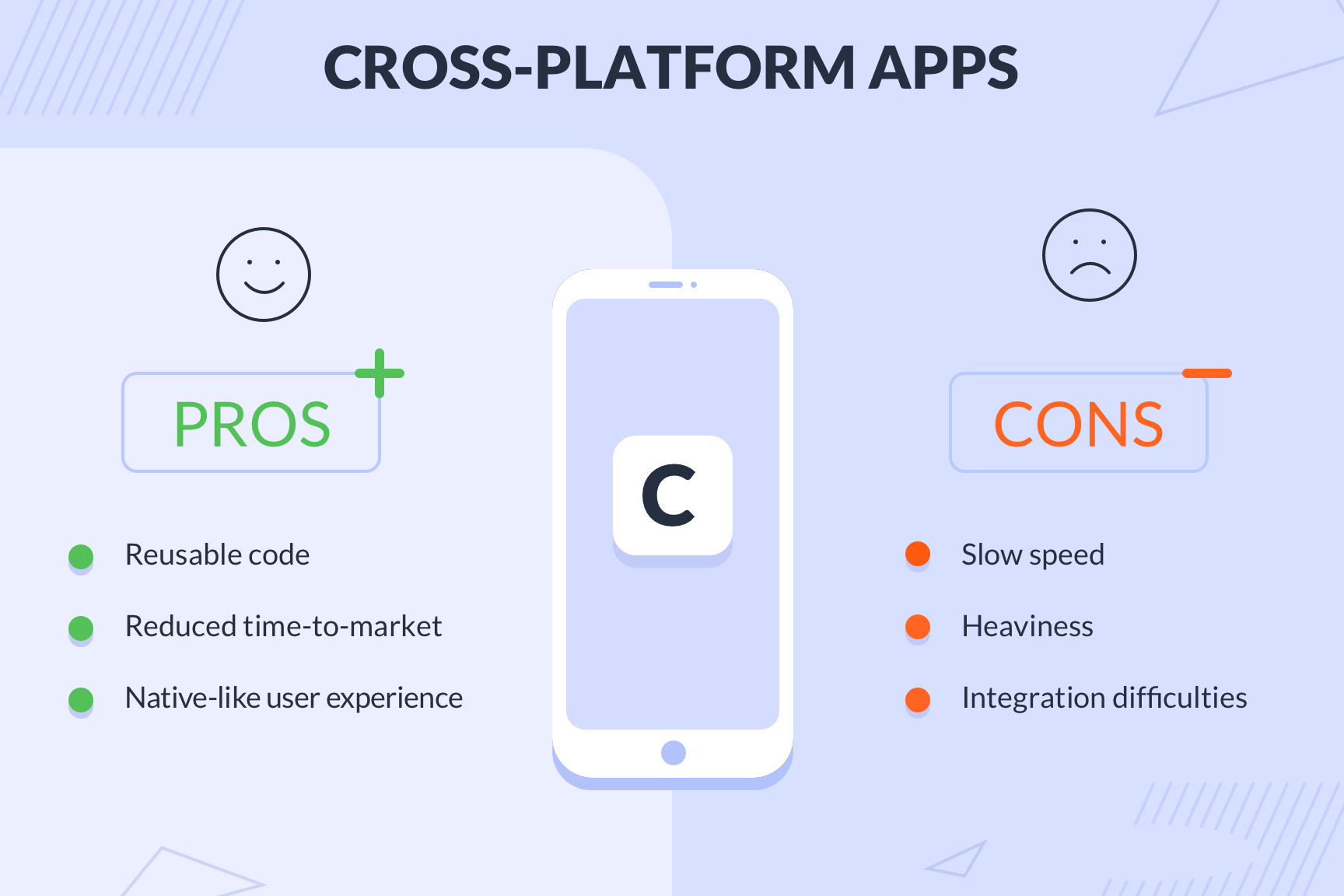
How to Select the Ideal Technology Stack for Your Project?
Narrowing down the choice to one technology stack is a critical decision that can make or break the app’s success. Before the selection of tech stack, there are a couple of things you should be cleared with for building a reliable, scalable, maintainable, and secured app.
Here are the factors you should keep in mind:
- Project type
You need to be clear with the following things about your future app before you select the technology stack that is- performance, degree of customization, user experience, network conditions, and the platforms. It helps you know which tech stack has the combination of tools, libraries, frameworks, and programming languages that help in getting things done.
- App idea validation
It doesn’t matter whether you are a start-up or a leading enterprise when it comes to verifying the app idea that can engage the target users and help in seizing an extra edge. The app idea validation lets you know whether you get the app developed natively or go cross-platform way for increasing the app’s exposure.
- Time to market the app
In the dynamic world, technologies are innovating at high speed that before you get the app build and launch, the technology becomes outdated. When the companies want to quickly get the app built and make it viral with social integrations and other things, the cross-platform approach with readymade solutions fits the bills.
- Mobile app development goal
What do you want to accomplish with mobile app development? Be it- fast response, high latency, device-specific functionalities, and others. Depending on the needs- heavy load processing or streamlined interactions, the tech stack is chosen accordingly to build the app that performs.
- Compatibility
Perhaps, the mobile app development is underway, and suddenly, you are stuck with technology that you want to include or change the existing tech stack. Before you get started, you should check the compatibility with the current tech stack, if it goes well, then only plan to add it to the tech stack at a later stage.
- Security level
The apps with distinct genres come with varying levels of risks. For instance, financial and banking are most prone to be hacked, which makes it essential to choose a tech stack that ensures robust security while combating any type of vulnerabilities.
Summing it up
Let’s accept it: Mobile app development has become bread and butter for businesses. The mobile app- the lifeline of organizations works well when the right technology is selected that enables organizations to respond to the changing needs of users, processes, and operations. Choose the secret ingredient of the mobile app recipe smartly, else it turns into a disaster. If you require any assistance, get connected with our business consultants for needed help.

A technology stack refers to the combination of programming languages, frameworks, libraries, and tools used to build and run a software application.
The right tech stack ensures optimal performance, scalability, and maintainability of your application. It also helps reduce development time, improve security, and lower long-term costs.
Consider your project’s requirements, such as the type of application (web, mobile, or desktop), scalability needs, development time, and your team’s expertise. Additionally, evaluate the stack’s community support and future adaptability.
Key factors include the complexity of the project, available resources and budget, performance, scalability, security needs, and the expertise of your development team.
A frontend stack is used to build the user interface (UI) of an application (e.g., HTML, CSS, JavaScript). A backend stack handles the server-side logic, databases, and APIs that power the application (e.g., Node.js, Python, Ruby on Rails).
Popular web development stacks include:
MEAN Stack (MongoDB, Express, Angular, Node.js)
MERN Stack (MongoDB, Express, React, Node.js)
LAMP Stack (Linux, Apache, MySQL, PHP)
For mobile apps, consider whether you need a native app (iOS/Android) or a cross-platform solution. Native stacks might include Swift (iOS) or Kotlin (Android), while cross-platform stacks like React Native or Flutter allow you to target multiple platforms with a single codebase.


